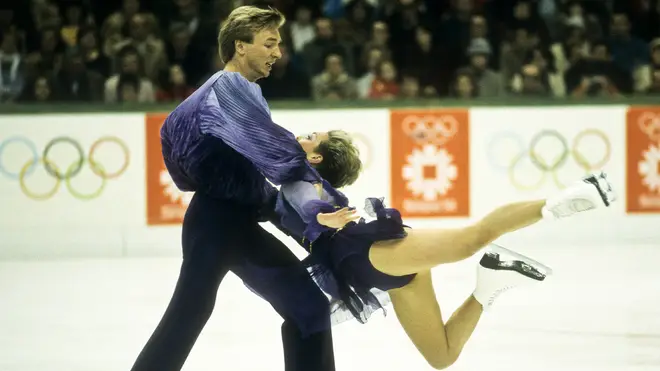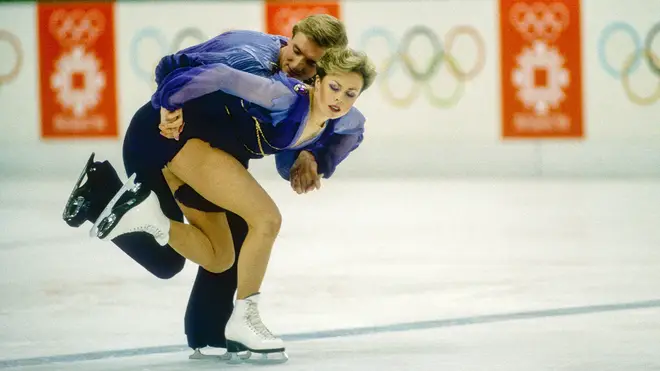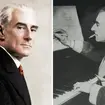Remembering Torvill and Dean’s timeless ‘Boléro’ figure-skating routine at the 1984 Winter Olympics
14 February 2024, 11:09

Looking back on the spectacular figure skating routine that went down in Olympics history and brought the music of Ravel to the masses.
Listen to this article
On Valentine’s Day in 1984, Jayne Torvill and Christopher Dean made history at the Winter Olympics and set a new standard for world-class figure skating.
40 years on from their historic performance, Torvill and Dean have returned to that very same spot in Sarajevo to announce their retirement. “We’re not spring chickens anymore,” Dean said.
“We’re still able to [skate] to a certain degree that we feel good about it – but that will go,” he continued, reflecting on the ‘launching pad’ of their career which led to them “touring around the world, skating in front of hundreds of thousands of people, and then Dancing on Ice starting up, because of us winning the Olympics.”
On that historic day 40 years earlier, Torvill and Dean were the last to perform in their category. All eyes were on the British figure skating duo as the opening snare drum line of Ravel’s Boléro began to pitter-patter through the Olympic stadium.
Their heart-stopping performance, which paired the great orchestral work with an elegant, seamless routine, captured the world’s imagination and had a British TV audience of 24 million people glued to their screens at home.
The skating duo won gold and, with a full house of 6.0 artistic impression scores, became the highest-scoring figure skaters of all time for a single performance.
Read more: Teenage figure skater lands historic jump in Olympics routine to Ravel’s Boléro

Torvill & Dean Bolero 1984 Olympic Winning Routine
As they fell to the ice in a dramatic finale, the whole stadium stood and applauded, with flags of all nationalities waving fervently in appreciation of the skating talent.
Mesmerising in its grace and fluidity, Torvill and Dean’s inimitable self-choreographed routine set the bar for creativity in figure-skating.
And for so many, Torvill and Dean’s routine has made Ravel’s Boléro, with its insistent melody and repeated snare-drum rhythms, synonymous with the sport.
But as music choices go, it was far from a safe bet...
Read more: A new biopic about Maurice Ravel and his iconic ‘Boléro’ is set for 2024 release

Even the fastest performances of Ravel’s original work, penned by the French composer in 1928, take it to a minimum of 14 and a half minutes. And for this performance, the pair were limited to four minutes – give or take 10 seconds.
They consulted with a music arranger, who told them the minimum time it could be condensed to was four minutes, 28 seconds. Determined to use the piece, Torvill and Dean scoured the rule book and found that the stopwatch only started when the skates touched the ice.
So, the pair began their famous routine on their knees, timing it perfectly so that when Torvill first placed a blade on the ice, they would have the maximum time remaining to spin around the rink.
For so many, hearing Boléro today will recall memories of this special moment in Olympics, and British, history.
In 2002, a UK poll conducted by Channel 4 saw the moment voted number 8 in the top 100 Greatest Sporting Moments.
Read more: Definitively the greatest classical music moments in Olympics history

Freddie Mercury and Monserrat Caballe perform at Barcelona Olympics in 1992
The performance becomes even more poignant when you look at its historical context. The Sarajevo 1984 Winter Olympics took place at the height of the Cold War.
Its aftermath sparked the breakup of Yugoslavia and a succession of conflicts throughout 1990s. The Bosnian war killed an estimated 100,000 Bosnian citizens, and reduced most Olympic venues in the country to rubble – either by conflict, or later neglect.
In 1994, Torvill and Dean reprised their Boléro routine on its 10th anniversary at the Lillehammer Winter Olympics, in support of the devastated Bosnian capital.
Part of what made Torvill and Dean’s performance so special, was also that their choreography wasn’t limited by any set elements; in 1984, there were no required jumps, spins or sequences.
Torvill has said that if they had performed their routine today, they likely would have been disqualified.
“Nowadays, with the rules of the competition, it’s quite a technical thing rather than a creative thing. The skaters have to include certain types of lifts, certain types of steps – none of which are contained in Boléro. So I don’t know how it would go down – we’d probably be breaking the rules,” she told British media.
Dean added: “We did a lot of long lines and lyrical movements, and it was more about a passion than about being a technical exercise.
“Everything moves on. But at the time, [Boléro] was definitely the pinnacle. And a lot of people still hold that to be true of it as an artistic piece, a passionate and emotional piece.”



















